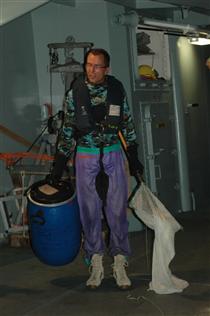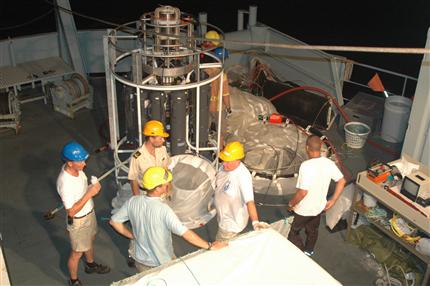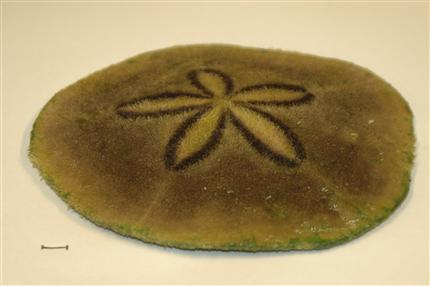Poisonous catchNewsletter 14
Dato 10.11.2006
Luck was with Arne Redsted Rasmussen and Anders Hay-Schmidt as they set out to research the world of sea snakes. Their Wednesday evening sortie in the dinghy yielded three poisonous sea snakes.
10.11.2006
Jyllands-Posten filmed this event – follow this link to see the video clip.
Great care was taken – sea snakes are amongst the most poisonous of the world's creatures, their bites killing thousands of people every year. One of the sea snake project aims is the development of more effective antivenins. Up to now doctors have treated sea snake bites with a so-called polyvalent serum. The researchers would like to help develop a more effective antivenin, which could work against specific types of snake bite. Sea snake venom may in fact have medicinal potential – some types of venom have demonstrated for instance (in very small doses) a blood thinning property. Link to project description (Danish)

Foto: Anne Sofie Berendt, The Danish Expedition Foundation
Sea snake catcher Anders Hay-Schmidt with highly poisonous animals safely inside a blue container.
A Robinson Crusoe experience….
Other highlights of the week included a visit on Sunday (5 November) to a small island off Broome. This was unintentionally extended for some of the expedition members. The tide left 21 journalists, researchers and crew stranded. The dinghy was not able to sail away, so everyone found shelter for the night, richer for the experience nonetheless! Politiken’s report and picture here
G'day, Australia – and cheerio mate!
On Monday morning (local time) VÆDDEREN arrived in the small port of Broome on the northwest coast of Australia. New researchers joined the ship. Several people went into town, on the beach for a walk or to the local crocodile farm. Meanwhile, the CTD wire was unrolled and wound back in. The wire has given some problems over recent weeks, but looks as though it is all right now.

Foto: Anne Sofie Berendt
The working day on board VÆDDEREN is long. On the quarterdeck, samples are being hauled in – day and night.
On Tuesday, VÆDDEREN left Broome and by the evening the expedition had reached the first station of a transect – “a path along which one records and/or counts occurrences of the phenomenon of study” (definition – Wikipedia). The transect will take several days and stretch from Broome outwards to much deeper waters.
Bottom trawling
As mentioned, Wednesday was the day of the sea snake. Other projects were active however: A trawl of the sea bed for Alien matter and metals was underway long into the evening. The project investigates the accumulation of foreign matter in shellfish, whelks and other creatures on the ocean floor. The picture tells the story of one of the many resulting specimens….

Foto: Anne Sofie Berendt, The Danish Expedition Foundation
This member of the sea urchin family was amongst the catch when the ‘Alien matter and metals’ project conducted a bottom trawl off Broome. The line in the bottom left corner is 1 cm long.
Last ship’s bulletin on Thursday evening: 19.45 hours local time, a new sea snake catch was being reported. Half an hour later, Erik Fausing from the Ministry of Education was posing with a very impressive King Fish (Scomberomorus commerson). Read about and see the pictures of what was caught at the Education Ministry website:
It’s warm on board VÆDDEREN, very warm. …. Around 40 degrees… …
|